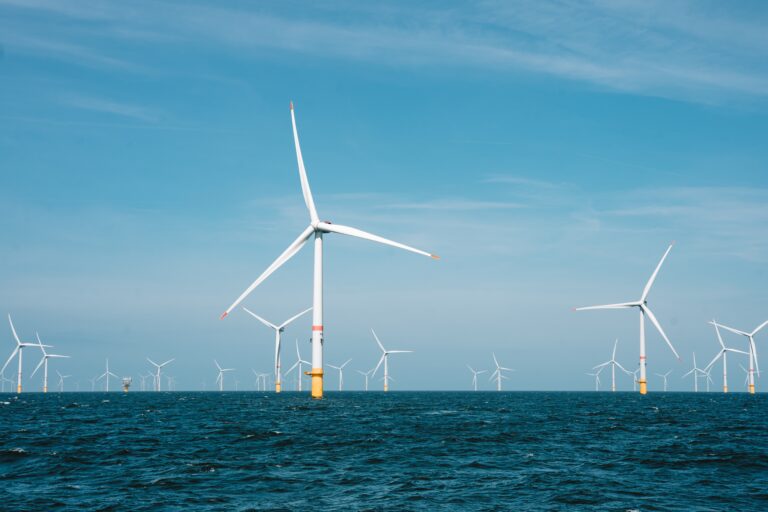Project Description
Seismic reflection data inversion is an established method to derive the physical properties of rocks from seismic data. In the light of the recent drive towards energy transition, especially for offshore wind energy, seismic inversion can derive geotechnical properties of sedimentary rocks in the shallow subsurface necessary for constructing wind turbines. However, there are no universal relationships linking seismic responses of sediments and their geotechnical properties, with a largely empirical and site-specific approach used at present.
This project aims to develop relationships between cone penetration test (CPT) measurements and seismic parameters for the shallow subsurface with the particular focus on complex geological settings (for example glaciogenic sediments) and quantify the uncertainties of such estimations. Using these relationships and industry seismic data examples, 2D and 3D high and ultra-high resolution synthetic seismic models will be constructed to capture the full range of geological conditions encountered in the shallow subsurface. These models will be used as inputs, along with derived synthetic CPTs, to test and optimise commonly used inversion schemes and workflows (including those augmented with machine learning) and derive key geotechnical soil parameters to quantify the uncertainty associated with each method. Finally, the optimised synthetic workflow will be applied to industry-standard ultra-high resolution seismic data and accompanying borehole and CPT data.
The research undertaken during this project will set a new standard by exploring the full scope of geotechnical parameters that are fundamental to offshore windfarm engineering. Seismic geomorphology approach including advanced seismic attribute computation and depositional-process- based seismic data interpretation will be used to robustly assess and validate the results off the inversion algorithms. Project outcomes will have a direct influence on the environmental impact of offshore windfarm surveying and installation by optimising seismic acquisition and CPT drilling and better quantifying subsurface properties, developing inversion workflows and constraining uncertainties.
The student will gain experience in interpreting and inverting ultra-high-resolution seismic data, glacial and marine sedimentology, and marine geomorphology. As a result the student will obtain a unique skillset spanning numerical and geophysical methods, geology and geomorphology and will be uniquely equipped to enter the job market with a range of different career options.
The student will join the vibrant geosciences and geophysics research groups and enjoy access to marine windfarm surveying industry contacts and datasets. In addition to dedicated QUADRAT training, additional training via MSc modules programmes from Sustainable Energy Geosciences and Geophysics could be accessed.
CANDIDATE BACKGROUND
Essential: BSc in Geology, Geoscience, Geophysics, Physics, or a related subject; strong interest in energy transition and/or marine geoscience; spreadsheet and academic reading/writing skills; networking and presentation experience.
Desirable: MSc in Geology, Geoscience, Geophysics, or a related subject; experience in seismic interpretation and/or seismic inversion and/or seismic machine learning; knowledge of Quaternary/shallow marine geological structures; offshore geotechnical experience.
Photo credit: Jesse De Meulenaere on Unsplash
Supervisors
David CornwellPrimary Supervisor: | Profile: David Cornwell Email: d.cornwell@abdn.ac.uk Institution: University of Aberdeen Department/School: School of Geosciences |
Andrew NewtonSecondary Supervisor: | Profile: Andrew Newton Email: A.Newton@qub.ac.uk Institution: Queen's University, Belfast Department/School: School of Natural and Built Environment |
Additional Supervisor: |
University of Aberdeen, School of Geosciences Email: bkurjanski@abdn.ac.uk |
References
Kurjanski, B. et al. Quantifying the reduction of ground modelling uncertainty achieved though seismic data re-processing and re-interpretation, Proceedings of the Offshore Site Investigation and Geotechnics Conference (OSIG23), London, 2023
Havelia, K., Manral, S., Tilley, S., Freeman, S., & Kriplani, S. (2022). Integrating high-resolution seismic inversion with geotechnical data to assess subsurface soil profile in offshore wind farms. 3rd EAGE Global Energy Transition, GET 2022, 166–170. https://doi.org/10.3997/2214-4609.202221097
Monrigal, O. J., & Vardy, M. E. (2016). Inversion of Ultra High Resolution 3D to Derive Sediment Properties. 2016(1), 1–5. https://doi.org/10.3997/2214-4609.201602148
QUADRAT Themes
- earth-systems
Partners
To be confirmed






















































